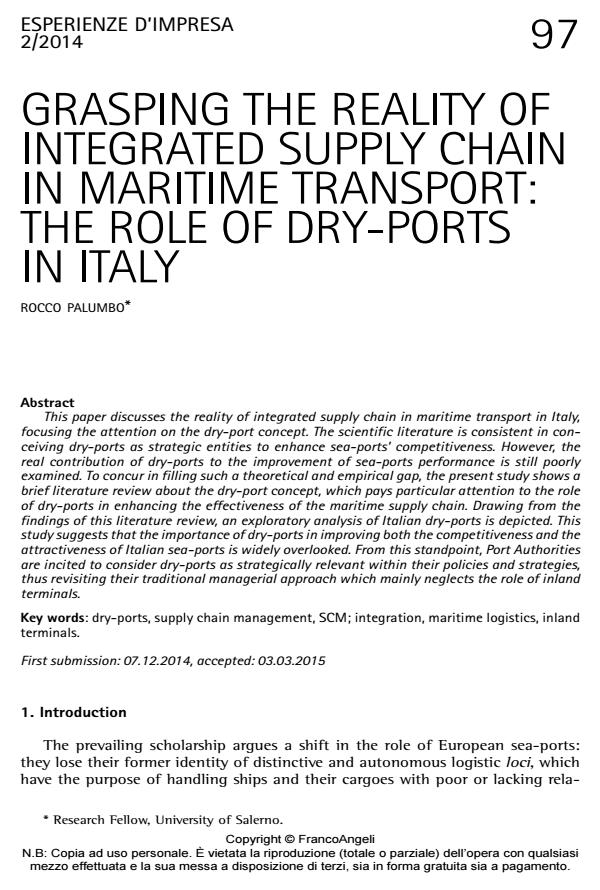Grasping the reality of integrated supply chain in maritime transport: the role of dry-ports in italy
Journal title ESPERIENZE D'IMPRESA
Author/s Rocco Palumbo
Publishing Year 2015 Issue 2014/2
Language Italian Pages 22 P. 97-118 File size 147 KB
DOI 10.3280/EI2014-002006
DOI is like a bar code for intellectual property: to have more infomation
click here
Below, you can see the article first page
If you want to buy this article in PDF format, you can do it, following the instructions to buy download credits

FrancoAngeli is member of Publishers International Linking Association, Inc (PILA), a not-for-profit association which run the CrossRef service enabling links to and from online scholarly content.
This paper discusses the reality of integrated supply chain in maritime transport in Italy, focusing the attention on the dry-port concept. The scientific literature is consistent in conceiving dry-ports as strategic entities to enhance sea-ports’ competitiveness. However, the real contribution of dry-ports to the improvement of sea-ports performance is still poorly examined. To concur in filling such a theoretical and empirical gap, the present study shows a brief literature review about the dry-port concept, which pays particular attention to the role of dry-ports in enhancing the effectiveness of the maritime supply chain. Drawing from the findings of this literature review, an exploratory analysis of Italian dry-ports is depicted. This study suggests that the importance of dry-ports in improving both the competitiveness and the attractiveness of Italian sea-ports is widely overlooked. From this standpoint, Port Authorities are incited to consider dry-ports as strategically relevant within their policies and strategies, thus revisiting their traditional managerial approach which mainly neglects the role of inland terminals.
Keywords: Dry-ports, supply chain management, SCM; integration, maritime logistics, inland terminals
Rocco Palumbo, Grasping the reality of integrated supply chain in maritime transport: the role of dry-ports in italy in "ESPERIENZE D'IMPRESA" 2/2014, pp 97-118, DOI: 10.3280/EI2014-002006